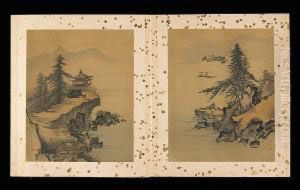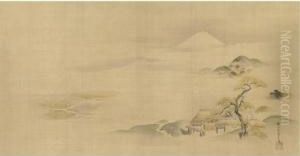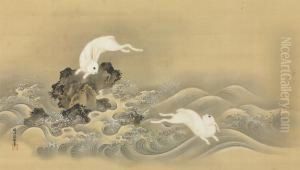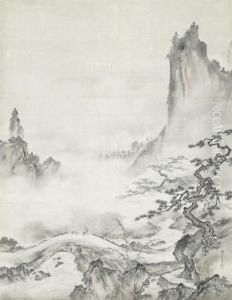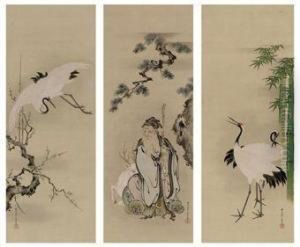Kano Seisen'In Paintings
Kano Seisen'in (also known as Kano Osanobu) was a Japanese painter who lived during the late Edo period. He was born in 1796 into the prestigious Kano family, a lineage that had dominated Japanese painting for more than 400 years, serving as official painters to the shogunate and various feudal lords. The Kano school, established in the 15th century by Kano Masanobu, was known for its strong Chinese-influenced style, which included bold brushwork and a use of ink monochrome (sumi-e).
Seisen'in was a direct descendant of Masanobu and was trained in the family tradition, mastering the techniques and styles that had been developed and refined by his forebears. His works often blended the Kano tradition with a more contemporary sensibility, which was reflected in the changes happening in Japan at the time. He was adept at both large-scale screen paintings and smaller, more intimate works.
Seisen’in's paintings often featured landscapes, birds-and-flowers, and historical subjects. His works are characterized by their attention to detail and a subtle use of color. Throughout his career, he contributed to the maintenance of the Kano school's dominance in the Japanese art world, even as new Western influences began to make their way into Japan towards the end of his life.
Kano Seisen'in's contributions to the Kano school and Japanese art as a whole were significant, and his works remain a part of important collections in Japan. Despite the political and social upheavals that would eventually lead to the end of the Edo period and the dissolution of the samurai class, the Kano school, and artists like Seisen'in, played a key role in maintaining the continuity of Japanese cultural traditions during a time of great change. Seisen'in passed away in 1846, leaving behind a legacy that would inform and inspire future generations of Japanese artists.
